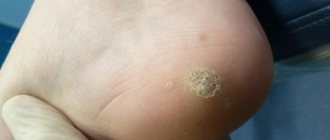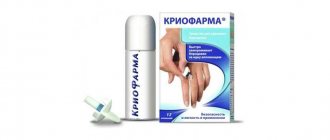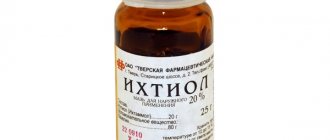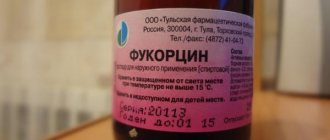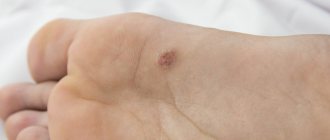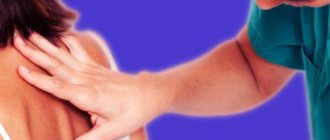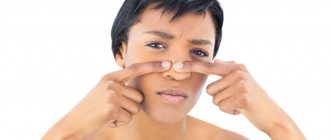A scar is a connective tissue formation that has a dense structure and arises as a result of the regenerative process of tissue after damage or inflammation. The basis of the scar is collagen; this area has significant differences from the rest of the skin and is characterized by increased sensitivity to ultraviolet radiation. Some tissues have the ability to restore their functionality, but this depends on the type of defect and the method of exposure. Is it possible to remove a scar on the face completely?
When and why do scars appear?
The appearance of scars and cicatrices on the skin is usually preceded by injury or an inflammatory process. Unfortunately, our skin is not capable of complete regeneration (100% recovery), which is why, in areas of damage, instead of skin elements, connective tissue appears, forming a scar. The main purpose of connective tissue during injury is to close the area of injury, thereby protecting the body from blood loss and infection. However, the functions of the scar are limited to this, since it is not able to fulfill the role that the skin played. The scar does not have hair follicles, sweat and sebaceous glands, the scar reacts poorly to ultraviolet irradiation, the scar has low elasticity and low extensibility. In addition, the scar always looks unaesthetic. Scars are different: hypertrophic (the scar bulges due to excessive formation of connective tissue), atrophic (the scar looks like a depression due to insufficient scar tissue), keloid, vascular. Quite often, a scar deforms the adjacent areas of healthy skin. That is why people with scars, for the most part, strive to get rid of them.
What are the most common causes of scar formation? The vast majority of scars we carry out from childhood and adolescence - most often these are traces of chickenpox or unsuccessfully squeezed out pimples, or the consequences of various falls, blows, traces of burns. A separate group of scars are scars and scars after operations - including after cesarean section, and marks for which everyone should thank themselves - scars after unsuccessful attempts to remove a tattoo or scars after piercing.
Features of different types of scars
The scarred area is noticeably different from healthy skin. Connective tissue allows the skin to repair itself, but its functionality is greatly reduced.
There are several types of scars:
| Name | External signs | Reasons for formation |
| Atrophic | Located lower than the surrounding epidermis. Soft, pigmented, mobile. |
|
| Keloid | Uneven structure, increased density, bulging above the surface. | Incorrect reaction of the body, which leads to excessive production of collagen at the site of injury. |
| Nomotrophic | It has a flat elastic surface that is flush with the surrounding tissues. | Optimal formation after injury. |
| Hypertrophic | Increased skin texture, pink color, soreness. | Formed as a result of excessive collagen production. |
Experts will combine keloid and hypertrophic scars into one group; both types are formed as a result of the inflammatory process, excess collagen and reduced immunity.
Getting rid of scars
Methods for combating scars can be combined into three groups: plastic and laser surgery (scar excision), hardware cosmetology (laser resurfacing, laser photothermolysis) and the use of medications (creams and ointments) that make the scar less noticeable against the background of surrounding healthy skin. Most often, medications that affect scars are prescribed in addition to surgical or hardware treatment. Ointments prescribed for the treatment of scars have different mechanisms of action: influence on the intensity of collagen synthesis, normalization of blood circulation, antibacterial effect, increased immune activity, etc. Most often, Aldara, Dermatix, Contractubex, Kelofibrase, Cordran, Medgel, Skarguard, etc. are used to reduce the size of the scar. Since each of these ointments has its own contraindications, they should be prescribed by a doctor during a face-to-face consultation. Plastic surgeries and surgeries using laser technology are usually performed in cosmetic and plastic surgery clinics. Laser resurfacing is now available in many large beauty salons. Creams and ointments with a scar-modulating effect are prescribed by dermatologists, surgeons, and cosmetologists.
Depending on the nature of the scar (length, depth of the scar, amount of scar tissue, location on the body), treatment leads either to the complete disappearance of the scar or makes the scar much less noticeable. You need to know that scar tissue is capable of regenerating (that is, being restored to the same volume), so the separate use of plastic surgery or laser resurfacing does not guarantee that the scar will not appear again after some time. Regrowth of scar tissue is especially common in hypertrophic and keloid scars. To prevent scar recurrence after its removal, additional therapy is prescribed to prevent the growth of scar tissue. For this purpose, medications are prescribed - scar tissue modulators, radiotherapy, electrophoresis (for example, with lidase). In addition to laser resurfacing, laser scar sclerosis is sometimes prescribed (the procedure is aimed at impairing blood circulation in the scar).
Many people are interested in what the area where there used to be a scar will look like after sunbathing. So, experts say that after excision of a scar or laser resurfacing, a moderate tan will not cause the scar to “appear” in its original place. Prolonged exposure to the sun may well lead to the appearance of a light stripe at the site of the former scar, which will stand out unfavorably against the background of tanned skin.
Laser resurfacing
Before proceeding with laser or surgical treatment, you need to correctly understand that it will be impossible to completely remove a fairly large old scar. But, you can make it somewhat invisible in texture and color.
With the help of laser resurfacing, scars can disappear by at least ninety percent.
To the question “Why can’t a scar or a scar be completely removed?” we also have an answer: all this is connected with the mechanism of formation of a scar or scar; during wound healing, elastic skin tissue is replaced, so to speak, by very dense fibrous tissue.
At the moment, if during healing an excessive amount of fibrous tissue is formed, the scar itself will protrude above the surface of the skin, but if the connective tissue is formed somewhat insufficiently, the scar will be slightly below the surface of the skin.
In absolutely every specific case, the method of laser removal of scars is chosen depending on the simple characteristics of the formation of the scar and the skin.
As a rule, only two methods are distinguished: standard (classical) scar resurfacing and fractional laser resurfacing.
Standard grinding is performed with an erbium laser, which operates in the mid-range infrared range. The peculiarity of this laser is that the energy of its beam absolutely completely absorbs water, which is naturally found in tissues, based on this, water is evaporated with very high precision, in thin layers several microns thick.
Thanks to such “jewelry” precision of tissue evaporation, it is possible to protect the skin from any damage to the sensitivity of its layer. At the moment of evaporation of intracellular moisture, a certain layer of dried cells is formed, which in due course is very easily removed.
The laser beam is capable of not only destroying the layer of dead epidermal cells, but also stimulating the regeneration of the skin.
Removal of scars with laser, using fractional resurfacing, is based on the activation of skin renewal. Using a laser beam, thin channels are left on the damaged skin, and neighboring areas are not affected.
The processes of skin regeneration themselves can be carried out mainly due to unaffected areas of the skin. Thanks to the activation of the formation of collagen and elastin, the structure of the scar tissue or scar becomes very elastic, and thus is able to look like the surrounding skin.
Contraindications
It must be answered that the procedure itself has several contraindications:
Exacerbation of skin diseases;- Blood diseases;
- Diabetes in the stage of decompensation;
- Pregnancy period;
- Oncological diseases;
- Tanned skin.
Recovery and efficiency
The effect of laser scar resurfacing will be noticeable almost immediately after the first procedure, but to obtain maximum results you need to complete the full course, which consists of six to ten procedures, with an interval of thirty or sixty days.
The recovery period after the procedure lasts from five to seven days, and the length of recovery mainly depends on the depth and size of the scar itself, and especially the skin. For seventy hours after polishing, it is forbidden to wipe the treated area of skin with various types of products that contain alcohol, and it is also forbidden to visit the sauna.
For thirty days you need to protect your skin from exposure to sunlight; sunscreens with a very high protective factor will help you with this.
It is necessary to remember about proper care at home, the use of moisturizing and nourishing creams, and also not to overdry the skin.
Postoperative scars
Many women are concerned about abdominal scars left after gynecological surgery or cesarean section. Scars look especially unsightly after dissection of the abdomen in the longitudinal direction (from the pubis to the navel). These scars lower a woman’s self-esteem and deprive her of confidence in her own attractiveness. To eliminate such scars, plastic surgery is most often used, during which the scar tissue is excised, and a cosmetic (intradermal) suture is applied to the healthy edges of the skin, which, after healing, forms a thin scar in the form of an inconspicuous white stripe. Laser resurfacing will help make this strip almost invisible. Sometimes this operation is performed on an outpatient basis. The duration of the operation is about 2 hours, the estimated cost is 2500-3000 UAH.
The same applies to scars after other surgical operations. However, in some cases (with a small scar size, with postoperative scars on the face - for example, after surgery for a cleft lip), several courses of laser resurfacing are sufficient. The cost of laser resurfacing ranges from 150-400 UAH. per 1 cm of scar. The choice of scar excision method is made during a face-to-face consultation with a surgeon and depends, as already mentioned, on the nature of the scar.
Who is at risk?
Most often, true colloid scars occur in middle-aged people. False ones, in turn, can occur at any age as a result of past and chronic skin diseases, after severe burns, as well as in women during pregnancy due to very strong and uneven stretching of the rather delicate skin of the abdomen.
Scars after chickenpox, acne (blackheads, pimples) and burns
The scars remaining at the site of chickenpox rash or deep pimples (acne) are not removed surgically - in this case, the use of laser resurfacing and special creams is indicated. Often these two methods are prescribed simultaneously or alternately.
The situation is more complicated with scars left after burns. If the burn surface is large, the scar also occupies a large area. In this situation, plastic surgery is indicated in most cases. During surgery, it may be necessary to graft skin from healthy areas of the body. Treatment of post-burn scars is often carried out in stages (several operations at certain intervals) and lasts for a fairly long period of time. Again, the duration and nature of treatment for a scar largely depends on its characteristics and is determined by the doctor only during a face-to-face consultation.
Prevention
By following simple rules, you will not only protect yourself from the growth of operated or treated scars, but also prevent the appearance of new keloids on the body.
To protect against colloidal scars you must:
- Do not allow tissue tension around the keloid;
- Do not take risks by trying to cure a scar on your own;
- It is forbidden to massage or put pressure on the damaged area;
- Do not expose the colloid to direct sunlight and avoid high temperatures;
- Let treatment take its course, ignoring and neglecting the advice of a specialist.
With proper care and timely treatment, this problem will not cause you much trouble and worry.
Keloid scars
It is still difficult for doctors to deal with keloid scars - bright red or bluish scars protruding above the surface of the skin. Often, unpleasant sensations are noted in the keloid area - soreness, a feeling of pulsation or itching. A feature of an active keloid is the almost continuous growth of scar tissue. The reasons for the formation of keloid scars are not fully understood; it is assumed that genetic predisposition plays an important role. Most often, keloid scars form on the chest, between the shoulder blades, on the back of the neck, on the shoulders, earlobes and lower part of the face. Most experts are unanimous in the opinion that it is impossible to treat keloid scars surgically (using plastic or laser surgery) - this will lead to even greater activation of the keloid and a rapid relapse of the process with the formation of an even more unsightly scar. Most often, methods used to treat keloid scars include scar tissue compression (squeezing the scar for a long time), the introduction of silicone gels into the scar tissue, injections of corticosteroids (adrenal cortex hormones), cryodestruction (liquid nitrogen treatment), vascular laser treatment, treatment using special ointments. The earlier treatment for a keloid is started, the higher the chance of a favorable outcome.
The appearance of a keloid
There are three stages before the complete formation of a keloid:
- During the first 7-10 days, a thin epithelial layer appears on the affected area of the skin, which may be accompanied by painful sensations;
- Next, scarring occurs within 25-30 days, scar tissue protrudes above the main skin;
- After the formation of a scar in the affected area, the percentage of connective tissue increases, blood vessels disappear over time, and the scar becomes denser.
Stretch marks
Another type of scar is stretch marks - unsightly white intradermal scars that occur mainly in women. The most common causes of stretch marks are hormonal diseases, sudden fluctuations in body weight and pregnancy, rapid growth during puberty. Treatment of stretch marks follows the same principles as the treatment of regular scars. However, more often for the treatment of stretch marks, procedures such as mesotherapy (injection of “fillers”, substances that fill a defect in the skin) into the area of stretch marks), peeling (exfoliation), injections of animal collagen, microdermabrasion (resurfacing stretch marks with microcrystals), fractional laser photothermolysis (stimulation of collagen formation using a laser). The method of treating stretch marks for each patient is selected individually based on the extent of the lesion, location and age of the stretch marks. The approximate cost of removing stretch marks is: for mesotherapy - 350-650 UAH, for laser photothermolysis 150-250 UAH. per 1 cm of stretch length.
What types of injuries are at risk of developing an atrophic scar?
This type of scar on the face is far from uncommon; the following types of skin damage can provoke its appearance:
- Acne (pimples, acne);
- Deep forms of pyoderma, boils and carbuncles;
- Burns of various origins, especially chemical ones.
- Various types of injuries: cuts, scratches;
- Surgical intervention;
- Complications in the fight against neoplasms: papillomas, moles, lipomas.
- Viral infections: chicken pox, herpes.
It is noteworthy that stretch marks, which occur due to internal rupture of collagen fibers during sudden weight gain or no less rapid weight loss, also belong to a type of atrophic scars and represent the only form of scar that occurs without external impact on the skin.
The medical name for stretch marks is striae; they occur more often in women and have the following causes:
- pregnancy;
- diabetes;
- obesity;
- violations of water-salt balance;
- hormonal disbalance;
- hereditary collagenoses.
Mainly, stretch marks form on the body: in the abdomen, chest and hips; on the face, they may appear mainly on the cheeks and cheekbones - in those places where subcutaneous fat is most pronounced.
How to prevent scarring
To prevent skin disfigurement with scars and cicatrices, you must adhere to the following rules:
- do not scratch the elements of the rash with chicken pox;
- Do not squeeze pimples under any circumstances - entrust the treatment of pimples, blackheads and acne to a dermatologist, otherwise you will only make things worse;
- do not agree to remove tattoos using surgical excision of an area of skin - the procedure of “hammering” the tattoo with flesh-colored paint will help make the tattoo invisible; Specialists have other methods of tattoo removal at their disposal (for example, using a laser);
- if it is necessary to perform a surgical operation, discuss in advance with the doctor the possibility of applying a cosmetic suture to all areas where the skin will be incised;
- if you receive injuries or damage, be sure to contact the emergency room - it is much easier to treat neat scars formed after suturing than to eliminate coarse scar tissue at the site of self-healed wounds;
- in case of injuries - carefully follow the doctor’s recommendations regarding regular treatment of the wound (suture) with antiseptics, taking antibiotics - the development of infection and inflammation in the wound area leads to the formation of coarse scar tissue and a large, sloppy scar;
- after injuries - discuss with your doctor the time to start using ointments and creams that slow down the development of scar tissue and reduce the size of the scar. Do not self-medicate (sometimes using the “wrong” ointment leads to an increase in the scar, but not to its disappearance);
- to prevent the formation of stretch marks - try not to suddenly lose weight or gain weight, take hormonal medications only as prescribed and under the supervision of a doctor, during pregnancy use special creams that increase skin elasticity and reduce the likelihood of stretch marks.
Chemical peeling at home
Chemical peels are classified as follows:
- Superficial – affecting the upper salts of the skin and promoting cell regeneration.
- Medium – penetrates deeper and carries out treatment at the middle level of the epidermis.
- Deep is the most radical, but also the most effective. However, it is not recommended to carry it out at home to avoid burns and injury to the skin.
Medium and deep peeling is used against scars. Treatment with superficial peeling is less effective, but results can be achieved if done regularly.
Superficial peeling with calcium chloride
To remove a scar this way, you will need calcium chloride, which can be purchased at any pharmacy without a prescription. The concentration for the first procedures is 5%. If no problems or side effects arise, you can use a 10% solution.
On a previously cleansed and completely dry face, apply a solution of calcium chloride using a sponge. Let the first layer dry and apply the next one. There should be four or five such layers (for the first time). In subsequent procedures – up to 8.
Leave for five to ten minutes.
Then apply soap to your hands (baby soap is the best). Using light movements, roll the medicine off the skin. Flakes will form under your fingers - these are dead epidermal cells.
Removing a scar in this way is completely possible only if such a procedure is carried out regularly and for a sufficiently long time.
Medium peeling with salicylic acid
Grind 3 aspirin tablets into powder and mix with half a teaspoon of water, milk, kefir or yogurt - whatever you like best.
Let the mixture brew for 5 minutes and add half a teaspoon of natural honey to it.
This mass should be applied to a previously cleansed face and left for 15 minutes. Rinse off with warm water.
Attention! During the procedure, you may feel a slight tingling sensation - this is normal. But before using such treatment, do a sensitivity test.
Sensitivity test
It is worth paying special attention to this point. After all, the success of the procedure and the expected result will depend on this.
Apply the active mixture to the inside of your elbow and leave for a few minutes. If you do not feel any discomfort and the skin does not become reddened beyond measure, you can use the solution to remove the scar.
Medical and cosmetic procedures
If you are looking for a way to effectively remove a scar from your face, you can immediately turn to the help of practicing specialists - cosmetologists, dermatologists and surgeons. The treatment methods will be as follows:
The most effective and expensive method today is considered to be laser removal . Such procedures help remove the scar almost without traces.
Laser therapy acts on the upper layers of the skin, but sometimes also on the deeper ones (there is active production of collagen, which helps fight scars).
This method is recommended for anyone who wants to eliminate a scar formed for any reason.
Surgery . The surgeon performs surgery to cut out the scarred area of skin and then makes a healthy graft. Sometimes intradermal sutures are applied to cut out the scar.
Chemical peeling . It is easier to deal with scars using this method, since such a procedure means removing the upper layers of the skin, which contain small, not too deep scars.
We get rid of defects on the face using hormonal therapy . The essence of this method is to inject hormonal drugs into the damaged area of the skin. Only specialists can prescribe such therapy.
Application of special creams . This type of procedure should also be discussed with cosmetologists. Today you can find a large number of special products in the form of creams that help eliminate scars.
